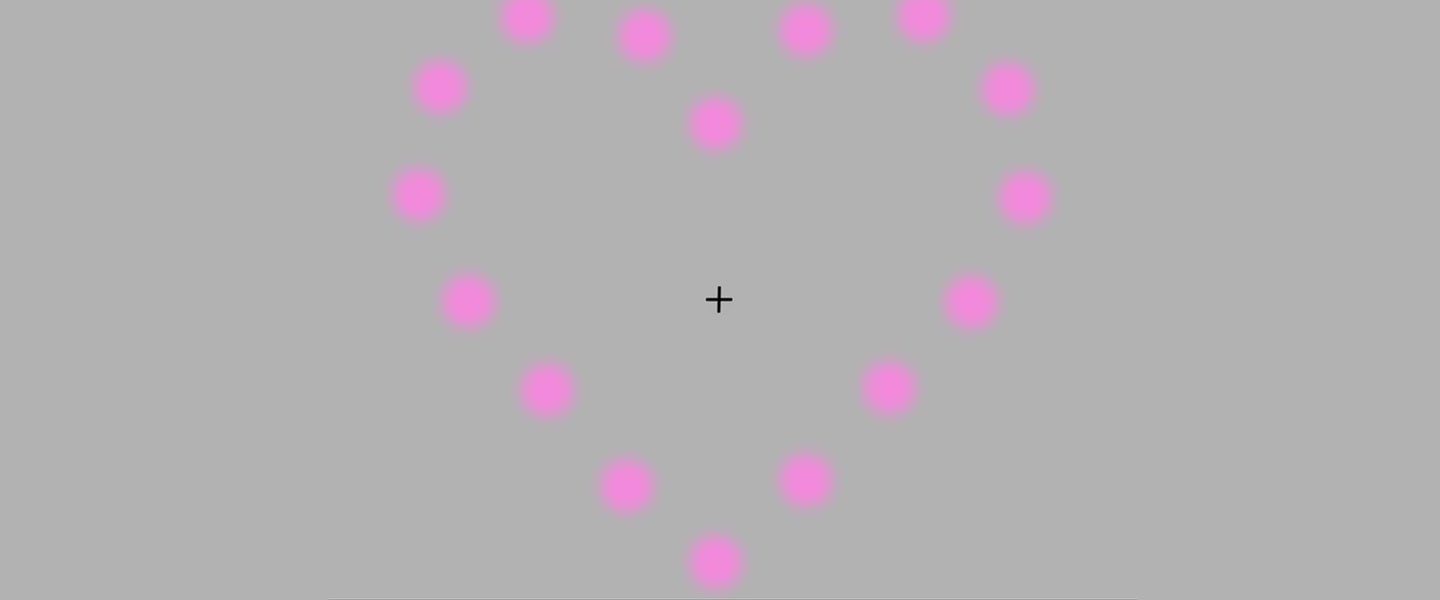Disappearing Color Wheel
When Sick Science! first got its start, we introduced an experiment called the Color Mixing Wheel. This spinning science toy was a great way to […]

Poets and other artists of language have said that love is blind. Well, we’ve got an optical illusion that is going to take that play on words and put it to the test. All you need to do is bring your eyeballs and we’ll teach you a fun trick to play on your eyes.
Start the player in the “Video” tab on this screen.
Stare at the + in the middle of the screen.
Don’t look away.
Keep staring!
What happened to the pink dots that were there before? They disappeared.
What happened to the dots after they were removed, when the frame changed? The dots were green!
The dots perceived disappearance is actually a visual phenomenon called Troxler’s fading or Troxler’s effect. When your sight is fixed on a certain point, visual stimuli in your peripheral vision will fade away and disappear after about 20 seconds or so. In this experiment, your sight is fixated on the + at the middle of the screen. As your brain becomes focused on that point, the pink dots in your periphery slowly fade and finally disappear. The effect is easy to do in this particular experiment because of the low amount of contrast between the light pink dots and the gray background.
Troxler’s effect does not explain the green dots that appear after the frame has changed, though. The green dots are explained by afterimage. This phenomenon is caused by the sensitive photoreceptors (or light receivers), primarily the cone cells, in your eyes. These cone cells adapt to the colors that they are being presented with, in this case pink. When the image is removed, the adapted cells receive less of those colors in the original image. This makes them extra sensitive to the original image’s negative. For our pink heart experiment, the cones are extra sensitive to green.